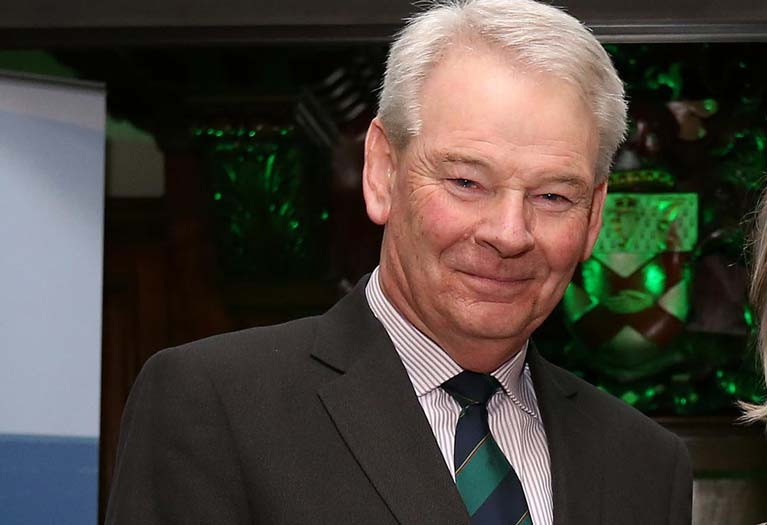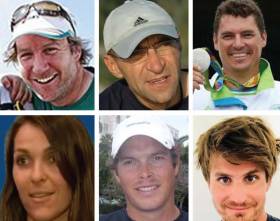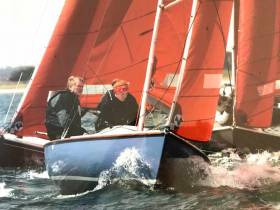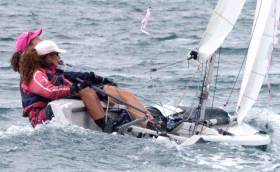Displaying items by tag: Irish Sailing Association
The Irish Sailing Association (ISA) has published 'updated' annual financial statements ahead of its agm this Saturday.
The recently-published 2022 annual financial statements presented a picture of robust financial good health, with almost €1.4m in the bank, though nearly €900k of this reflects grants received, which have yet to be disbursed.
However, the summarised financial statements did not explain the extraordinary reversal of the overall operating result, with a surplus of €171k in 2021 turning into a loss of €67k in 2022, a swing of €238k.
The Association said today (March 20) an 'administrative error' led to the accounts posting on March 14th without data that it traditionally publishes.
As regular Afloat readers will know, the absence of customary unaudited detailed income and expenditure accounts was reported last week.
The updated accounts 'IS Financial Statements with Appendix 2022' are downloadable below and on this link here
Saturday's AGM will be held at 1 pm in the Royal Marine Hotel, Dun Laoghaire, Co. Dublin.
Irish Sailing Association Elects New President as AGM Hears of “Real Crisis in Irish Elite Sailing”
Irish Paralympic veteran John Twomey succeeded David O’Brien as Irish Sailing Association president at its AGM in Dublin on March 26.
The Kinsale-based sailor represented Ireland at 11 Paralympic games, in both sailing and athletics (competing in the discus event, in which he won a gold medal in Seoul in 1988).
The AGM also heard former ISA president Roger Bannon press the board for further details on its plans to address issues highlighted in the recent external review of the Tokyo Games performance.
“Over the last 17 years, probably something in the order of €15m has been spent on High-Performance activities, almost €1.5m last year alone, and we have one silver medal in 2016 to show for it, won in exceptional circumstance by a uniquely talented competitor who was provided with a lot of support from resources outside of the ISA,” Bannon told the meeting.
“After 17 long years, it is not an acceptable nor a sensible reaction to a real crisis in our elite sailing structures for the ISA to describe the high-performance area as an ongoing work in progress and noting that lessons have been learnt and then change nothing fundamental.”
Mr Bannon went on to caution that “Olympic and High-Performance activities absorb over 50% of the resources of the Association and perform a highly visible role on behalf of us all. If the government loses faith with our sport’s potential to win medals, the generous funding we have all been fairly easily obtaining in recent years at club and national level will quickly diminish and indeed I understand this has already started.”
Noting that he had consulted widely, both from current and former High Performance athletes and experienced international coaches, Mr Bannon described the High Performance as “not fit for purpose”, and asked the board to describe “what meaningful action the ISA is going to take to materially change things.”
The outgoing ISA president, Mr O’Brien previously told Afloat that “The Irish Sailing Board and OSG will continue to work closely to ensure the issues highlighted in the [Tokyo] report will be addressed, and the best possible results achieved in Paris.”
The new ISA President, Mr Twomey, helmed in the Mixed Three-Person Sonar, a 23-foot two-sail keelboat in the 2000 Sydney Games, 2004 Athens Games, 2012 London Games and 2016 Rio Games and the Mixed Two-Person SKUD18 in the 2008 Beijing Games. He was elected President of the International Association for Disabled Sailing in 2012.
Two serving directors of the ISA, Fiona Bolger and Nikki Curran, stepped down at the AGM, having served for five years, while three new directors - Dave Cullen, Katie Dwyer and Mal Nowlan – were elected to the vacant positions.
Irish Sailing Association Accounts Reveal Assets Worth €3.5m
The ISA’s just-published financial statements reveal it spent €1,642,500 in operational grants in 2021, made up of €589,000 on core activities and €1,053,500 on High Performance. At the end of the year, just over €205,00 of core grants remained to be spent.
Capital Grants received on core activities amounted to €104,150 while €293,000 was received by the High Performance.
Core activities generated a surplus of €140,685 (2020 - €123,095) helped by Special Project Grant of €138k, of which only €38k has been specifically identified as an outlay in the accounts.
Increased sailing activity contributed to increases in;
- Membership income €12K
- Training Income €31K
- Handicap Income €14k
- Competence Certs €20k
Office income fell by €11k, reflecting the fact that the office has been closed for nearly two years due to the pandemic.
In that context, it seems surprising that payroll costs have increased by €76k or 16%, particularly when the accounts acknowledge that €39k in Government Payroll subsidy was received and credited against payroll costs.
The other big increase in costs is in legal and professional fees, which recorded a massive jump from €17k to €45k or 164%.
Communication costs have also grown, from €32k to €44k or 38%.
The High-Performance area experienced a surplus of €36,061 compared with a surplus of €179,044 in 2020 when activities were severely curtailed by Covid restrictions. Apart from special grants towards the cost of the Olympics, Government funding remained at the same level of €800,000. Staff salary costs at €284k for 2 full-time and one part-time staff is a significant proportion of overheads.
There are no details of the Irish Sailing Foundation in the accounts, apart from a note that €14,000 was received as a donation during the year.
The balance sheet shows a trade debtor of €387,658 compared to €743 in 2020. Surprisingly, there is no explanation offered about how this arose or from whom it is due.
The depreciation policy of the ISA means that Fixed Assets are valued at €720k and include the premises in Park Road, at a value of €122k with an open market value probably closer to €2.5m.
The net liquidity of the Association is very good.
- Assuming the Trade Debtor is readily convertible into cash, the ISA has liquid resources of €668k plus €388k making a total of €1,056k
- From this must be deducted designated but unspent deferred Government Grant expenditure of €205k and tangible real creditors and accruals amounting to €221k making a total of €426k.
The true net liquidity is therefore about €630k.
The aggregate real-world value of the Association’s assets is, therefore, closer to €3.5m, made up of €2.5m in fixed assets, plus book value €.5k and net liquid resources €.6k.
Download the 2021 ISA Accounts below as a PDF file
Irish Sailing President Urges Joint Approach Between Clubs & Association to Grow the Sport
Sailing should be marketed in the widest way possible to the public to increase participation. Clubs and the national association can do this together to emphasise its accessibility, the President of Irish Sailing, the national association, has told Afloat.
In a New Year's interview, David O'Brien, says that sailing provides a very wide opportunity for sporting participation, not just competitively.
"There is more to sailing than just racing and that needs to be emphasised as people look more to taking part in outdoor activities. While competitive activity is a niche part of the sport, so is just taking part, being active, getting on the water and enjoying what the water has to offer all around us.
"There is more to sailing than just racing"
He is my guest on this week's Podcast where he highlights the increased participation in sailing by young people, says clubs have done a great job during the year and been supportive of the national organisation. He stresses how important that joint approach is for the future of sailing and urges clubs to look to emphasise its accessibility to the public.
 Dinghy sailing at Greystones Sailing Club this summer
Dinghy sailing at Greystones Sailing Club this summer
"Hope to see an end to the 'stop/go/stop/go' situation"
For 2021, David O'Brien hopes that the sport can get back to some normality and see an end to the "stop/go/stop/go" situation which caused so many cancellations and so much disruption this year.
I began our interview by asking him about reports that more people had become interested in sailing because of their desire to get outdoors due to Covid 19 restrictions.
Irish Sailing President's Summer Blog
Irish Sailing President Jack Roy reviews a busy 2019 sailing season and reports on the association's next strategic plan
A very busy June on the water began with Seafest, described by An Tanaiste Simon Coveney as the “ploughing championships of the marine sector” moved to Cork City Quays for the Bank Holiday weekend. Over 100 people tried sailing on the River Lee on board 1720s from Royal Cork Yacht Club and Cove Sailing Club’s ketch the Anna Emily with support from Sail Cork, Blackrock Sailing Club and the “young mariners” from Kinsale (Outdoor Education Centre).
Also in early June, forty-five competitors in the 50th Solitaire Urgo Le Figaro race (known as the unofficial solo offshore world championship) raced from Nantes to their first stopover in a very welcoming Kinsale. It was a pleasure to meet with the sailors and support teams, including the leg winner Yoann Richomme of France as well as our own Joan Mulloy and Tom Dolan.
 Irish Sailing President Jack Roy (left) with Figaro Leg one winner Yoann Richmonne in Kinsale in June
Irish Sailing President Jack Roy (left) with Figaro Leg one winner Yoann Richmonne in Kinsale in June
The Irish Cruiser Racing Association (ICRA) National Championships took place on Dublin Bay and 93 boats from 23 clubs from around Ireland competed, including a large number of under 25s. The event saw five national titles decided and congratulations go to Dux of Howth Yacht Club which emerged overall winner.
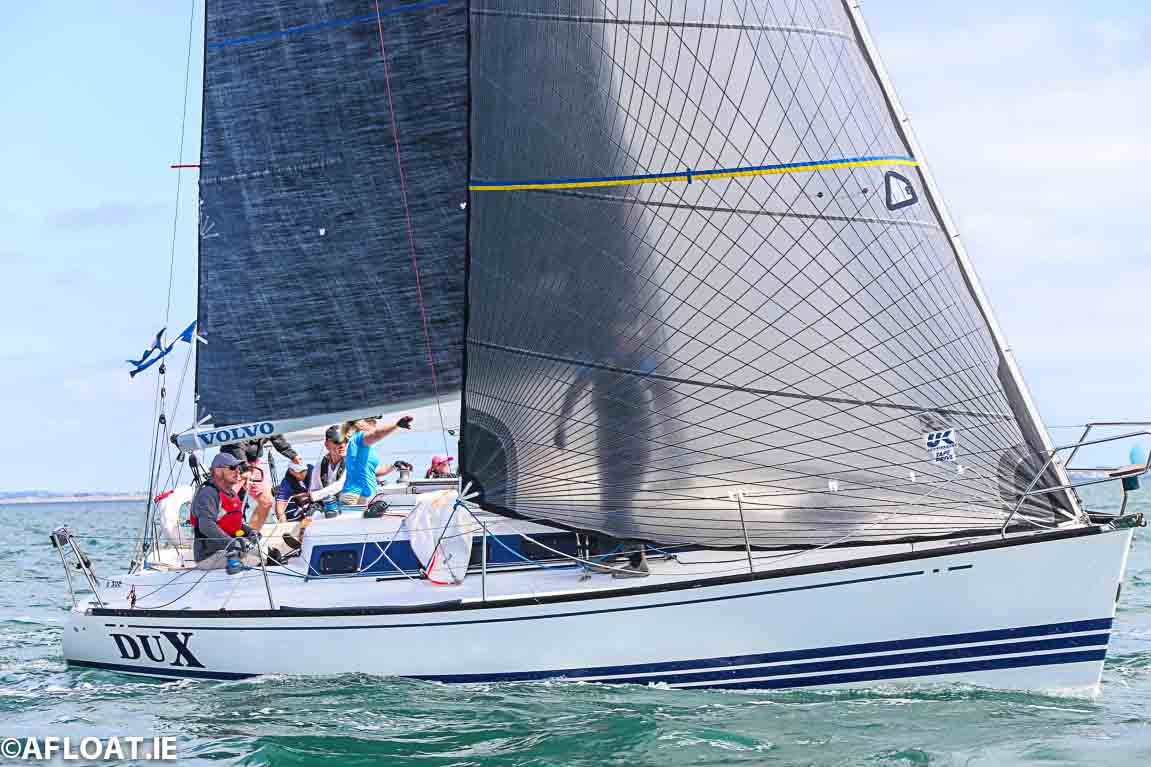 Dux of Howth
Dux of Howth
The 14th running of Volvo Dun Laoghaire to Dingle Race on June 12th was the most successful so far. Mick Cotter, of the Royal St George YC on Windfall, set a new course record while Paul O’Higgins of the Royal Irish YC became first skipper to achieve back to back wins with Rockabill VI.
 The Maxi Windfall at the start of the D2D Race
The Maxi Windfall at the start of the D2D Race
The last week in June saw the O'Leary Life Sovereigns Cup 2019 hosted by Kinsale Yacht Club. The formula applied to the running of this series proves to be hugely successful time and time again, making it enjoyable for all involved both on and off the water.
 Greystones winner Eleuthera competing at the Sovereign's Cup Photo: Bob Bateman
Greystones winner Eleuthera competing at the Sovereign's Cup Photo: Bob Bateman
July and the Volvo Dun Laoghaire Regatta held from the 11th – 14th was the biggest yet in terms of entries– 491 boats from 24 classes competed on 6 courses. This was a huge spectacle both on the water and from the shore. The classic fleets of Seabird Half Raters and Myths, both from Wales along with Howth 17s, were a particularly special sight on the bay.
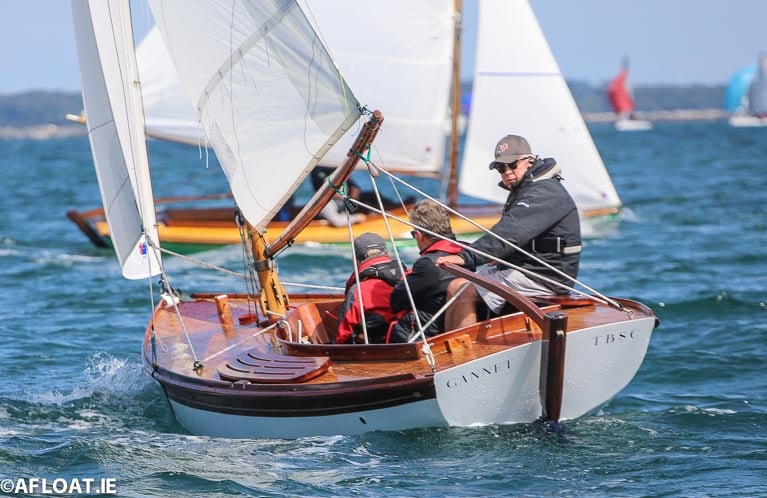 Visiting Welsh Seabird and Half Raters were features of this year's VDLR
Visiting Welsh Seabird and Half Raters were features of this year's VDLR
The first Irish Sailing Pathfinder Women at the Helm Regatta took place this weekend (17 & 18 August) at the National Yacht Club. Irish Sailing designed the event to increase the number of women in sailing, and with 61 boats taking part, we look forward to seeing the benefit to our sport.
This year the award-winning Watersports Inclusion Games moves to Kinsale (August 24 & 25) where we know this event is in good hands. 250 participants on each day are expected as well as equal numbers of volunteers. The range of watersports available to participants has expanded to include sailing, kayaking, canoeing, rowing, surfing, water skiing. The Games, organised by Irish Sailing, see people with all abilities from the physical, sensory, intellectual and learning spectrums take to and enjoy the water.
For more details see here
As always these are just a few of the larger events this season, every weekend local, regional, and national events are taking place in our 60 plus member clubs. These events are the lifeblood of our sport so, as always, well done to clubs, competitors and volunteers for working so hard every week to help promote active participation in our sport.
Talking of volunteers, something I refer to any time I’m given an opportunity, you are absolutely the cornerstone of our sport. Without your endless efforts, patience and generous time given, at every level, and in many different positions, within club life we quite simply would not have the great sport we all enjoy. It was, therefore, a little bit of a shock when it was brought to my attention recently that in some clubs and or classes it is assumed that volunteers, race officials, in particular, are paid for their time! I can assure you this is not the case, never has been, and certainly, I believe I speak for all fellow Race Officials, I never want to see the day where we may be paid, as is the case in some other countries. We all give our time as volunteers because we enjoy what we do and get great satisfaction and fun working with others in delivering great events.
Olympic Team
Back in March, the Irish Sailing Performance HQ funded by the Irish Sailing Foundation was opened on the grounds of the Commissioners of Irish Lights. The Performance HQ is now home to our Irish Sailing Team. Currently, our Olympic campaigners are at the Olympic venue in Enoshima aiming to qualify more classes for the 2020 games. Many congratulations to Lough Derg Yacht Club’s Aisling Keller who qualified Ireland for the Radial Class in next year’s Olympics, Howth Yacht Club’s Aoife Hopkins was placed only two places behind and an interesting trial process will now take place next season as to who will represent Ireland in the Radial Class in Japan. Good Luck to all our Performance Team!
2025 Strategic Plan
The second Irish Sailing Club Symposium “by Clubs, for Clubs” took place in March and included the “Stop, Start, Continue” session which asks participants what they would like to see changed in Irish Sailing. The feedback from this session was added to in the Cluster Meetings, and the collated information will now be submitted to the Strategic Review Committee as they start work on the 2020-2025 Strategic Plan.
Irish Sailing has started the process to develop our next strategic plan. This is a particularly critical time for Irish sport with the Government’s publication of the National Sports Policy 2018-2027, the changing social environment, and the way in which people now participate in sporting and recreational activities. The Irish Sailing Board have appointed a small steering group chaired by David O’Brien (RCYC, Irish Sailing Board), and to include Harry Hermon (Irish Sailing CEO), Fiona Bolger (BSC, Irish Sailing Board), Sarah O’Connor (Wilson Hartnell) and Brian Turvey (Howth YC). The group are tasked with the development of the plan and we are delighted that Sport Ireland is supporting the process through the funding of a professional consultant; Sarah O’Shea (SOS Sports Consult), who will work with the steering group. We have already received a great deal of feedback through the Club Growth Symposium and Cluster meetings, and we will be consulting with the membership and stakeholders in a more focussed way early in the Autumn.
While I appreciate this delayed blog is being read in August, I do hope you have enjoyed the season so far and let’s hope we still have a few months left of great sailing.
Safe sailing.
As always you can find out more on our various channels (our website’s newsfeed, Instagram and Facebook) or sign up for our newsletter here).
Irish Sailing's New Coaching Team Structure Announced
A 'renewed strategic approach' at the start of the year means a new coaching structure in Irish Sailing, with Rory Fitzpatrick moving to become Head Coach, overseeing a team of six.
Irish Sailing Performance Director James O’Callaghan says: “if you expect great things from athletes then you have to ensure you have great people around them. I can honestly say this is the strongest coaching team we have had in place. The coaches we have know how to get the most out of people so it’s a great time to be a sailor on our Performance Pathway”.
 Head Coach Rory Fitzpatrick oversees a team of six
Head Coach Rory Fitzpatrick oversees a team of six
Rory Fitzpatrick: Head Coach
Working with Performance Director James O’Callaghan, Rory will create greater opportunities for the sailors through performance planning, athlete and coach review structures, overseeing interactions with team support services, and creating development strategies for the coaching team. Rory’s aim is to get the best coaching knowledge from our teams and generate a progressive Olympic-cycle legacy. This year, a key task is to gather knowledge on priority event venues. In September we’ll start sending out our coaches and senior athletes to Japan to scout the Olympic sailing venue. They will start to familiarise themselves with weather patterns, support structures and race courses so that all our information is collated and shared to gain maximum advantage for our athletes.
Vasilij Zbogar: Laser Coach
Our newest appointment is Lasers coach Vasilij Zbogar. Vasilij’s short-term goal is to obtain the best possible performances with the Irish Laser Team at the World Sailing Championship in Aarhus, Denmark this August, and in the long-term at the Olympic Games. As a triple Olympic medallist (under the direction of Irish Coach Trevor Millar) Vasilij is well placed to pass on his knowledge and energy to Ireland’s Olympic Laser sailors. He’ll work closely with Rory and Sean Evans (below) to follow the young Laser sailors coming up the ranks and progress the current team in this highly competitive class.
Ross Killian: Junior Performance Manager and 420 Academy Coach
Ross has the combined role of Junior Performance Manager, coach and manager to the 420 Academy, and event organiser of the Irish Sailing Youth Nationals. Ross will run the programming and coaching of the 420 Academy teams and manage coaches and squads for the Laser 4.7s, Toppers and Optimist classes. Ross brings considerable Olympic experience to the role, both from crew (Athens 2004) and coach (Beijing 2008) perspective in the 470 class.
Sean Evans: Academy Coach
Sean coaches our Laser Radial Academy and manages the Irish Team for the Youth Sailing World Championship, working closely with Rory, Ross and Vasilij. Essentially, Sean prepares our younger sailors to enter into senior Olympic sailing. Sailors learn personal development alongside the technical fundamentals such as boat handling, boat speed, and develop through participation in international sailing, focusing on experience and not solely results.
Niko Resch: Olympic 49er Coach
Four-time Olympian Niko Resch coaches our senior 49er team, Ryan Seaton and Seafra Guilfoyle. As a new partnership there is lots of learning to be done but with the experience of Niko to guide them we are confident they will be ready for Tokyo 2020.
Tytus Konarzewski: 49er Development Team Coach
Tytus oversees our 49er Development team with the aim of bringing them to an experienced competitive level in senior Olympic sailing, and preparing for the challenge of Tokyo 2020 and beyond to 2024. Tytus has over thirty years coaching experience and is familiar with the Irish setup having coached our 49erFX team in the Rio Olympics.
Debbie Hanna, Laser 4.7s
Debbie works full time in the Sports Institute Northern Ireland, so we are lucky to have her involved with our Laser 4.7 squad. Debbie had a successful youth career representing Ireland twice at Youth Worlds. She went on to campaign for Beijing 2008 but ultimately lost the selections to Ciara Peelo. She is now one of Northern Ireland’s top coaches and will be passing on valuable insights to our young Pathway sailors.
The Annual General Meeting of the Irish Sailing Association will be held at the National Yacht Club at 1100 hrs on 10th March 2017.
The AGM will be immediately followed by a Commodores Forum chaired by Irish Sailing President Jack Roy, for Club commodores.
The President of the Board is elected annually in accordance with article 57.
Directors Paddy McGlade, Sarah Byrne & Brian Craig having been longest in office since their last election are retiring by rotation in accordance with article 64, and have been nominated by the Irish Sailing Board for re-election in accordance with article 62.
Download the full notice and agenda below.
Irish Sailing’s New Club Coaching Programme
Ross Killian is Irish Sailing’s 420 Academy Coach, but this summer Killian is also developing a new Club Coaching programme. Afloat.ie finds out more about the Club Coaching programme and what he’s looking for.
What’s the new Irish Sailing Club Coaching Programme all about?
We know that most children learn to sail during the summer on various Irish Sailing courses, but we wanted to put a programme in place that steps up a level and teaches children how to race, and at the same time, extends their time on the water after the summer months. The aim is threefold: teach younger sailors about racing, get more clubs and coaches interested in race coaching, and extend the summer season into the autumn.
The Club Coaching programme has two parts. The first is finding suitable instructors and coaches on the ground and bringing them up to a brand new Irish Sailing certification called “Club Coach Level 1”. The second is working with the clubs to design a tailor-made programme that takes into account club size, costs, boats available, and geographic spread.
What does this mean for Clubs?
This summer we are rolling out the programme for clubs to encourage them to nominate possible coaches. I also want to work with as many clubs as possible to create their own Club Coaching programme. If Clubs can include a club coach in their offering to members, we can encourage more children to learn about racing, extend the on-the-water season for sailors, and expand the pool of coaches. For example, if you are a mid-sized club and you have seven Toppers that have sailed all summer, why not get a coach to train up to Club Coach Level 1 and offer weekend race training after all the summer courses have finished – you could extend your season for three or four weeks in September and October. If you have a smaller fleet, you could think about teaming up with another club in your region and splitting the coaching sessions. I’m here to help with creating and tailoring these programmes.
What would you like to have achieved by this time next year?
By next year I’d like to have ten clubs actively running coaching programmes, and thirty valid and practicing trained coaches who are suitable to deliver club coaching.
What are you looking forward to most about this role?
I’m passionate about coaching and passionate about sailing, and I am looking forward to working with others to deliver the best training sessions to their young sailors.
Training for the new Club Coach Level 1 will begin in the autumn. If you’d like to find out more, please contact Ross Killian at [email protected]
ISA Want More Women Involved in Sailing
One of Jack Roy’s priorities for his presidency of the Irish Sailing Association (ISA) is to get more women involved in sailing.
As he wrote for Afloat.ie in April, the ISA wants to encourage greater female participation via a two-pronged approach.
That means both in the activity of sailing itself, via the Women on the Water programme, and through improving the gender balance in ISA governance.
Women on the Water — a network of Irish-based female sailors, windsurfers and powerboaters — was formed with the aim of raising not only the number of women getting afloat, but also their profile and level of skill.
And its continued success is now supported by the appointment of two more women to the ISA Board this year.
Fiona Bolger and Nikki Curran join Sarah Byrne, who has served on the board since 2015.
Byrne, an RS sailor from Greystones Sailing Club, is deeply involved in the Competition & Classes policy groups, no doubt ensuring the perspective of women in sailing is taken into account.
Her new board colleagues, who joined this past March, bring their own sailing pedigree.
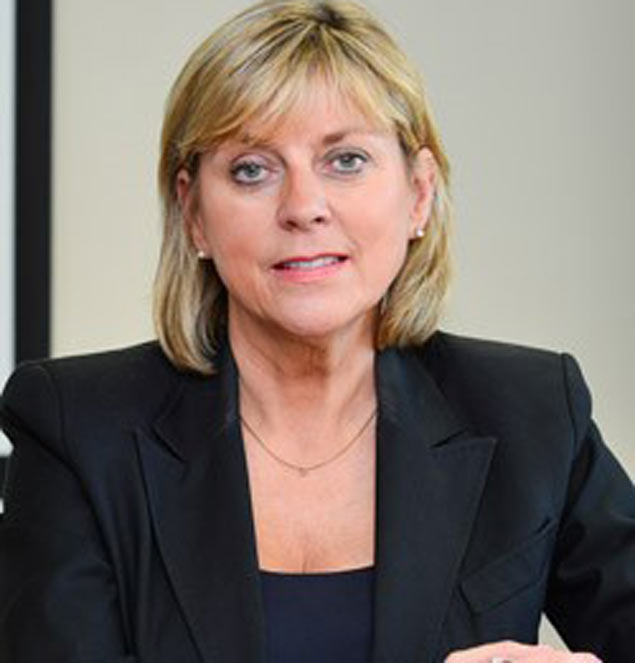 Fiona Bolger has joined the board of the Irish Sailing Association
Fiona Bolger has joined the board of the Irish Sailing Association
Fiona Bolger, a communications and PR guru, has a number of national and international events under her belt representing Baltimore Sailing Club in the competitive hotbed of West Cork.
As chief executive of Spinal Injuries Ireland, she has also been instrumental in organising the new Watersports Inclusion Games that are taking place in Dun Laoghaire.
Meanwhile, Nikki Curran will contribute to the Clubs & Participation policy group after many years heavily involved in junior sailing at Sligo Yacht Club, giving her a unique insight into what sailors wants from their clubs and their ISA.
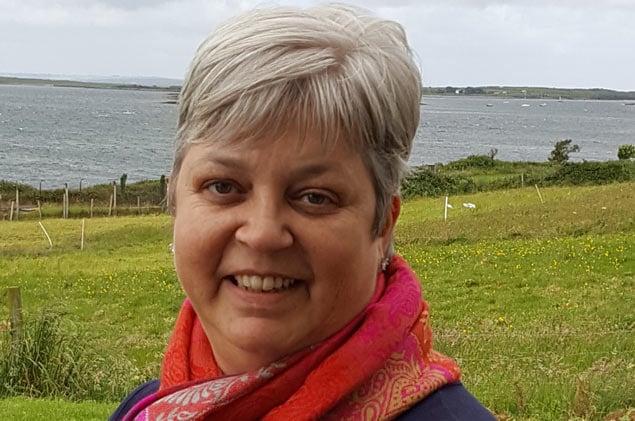 ISA Board Member Nikki Curran of Sligo Yacht Club
ISA Board Member Nikki Curran of Sligo Yacht Club
The presence of Curran, Bolger and Byrne brings female membership of the 11–seat ISA board to more than a quarter – confirmation that Roy is making good on his promises to steer the ISA to an inspiring new heading.
But it should also be clear that these are no mere token appointments, as all three bring to bear a wealth of experience both within and beyond sailing to promote a more inclusive sport for all.
#Canoeing: Paddy Boyd, who was previously the chief executive of the Irish Sailing Association, has been appointed as interim chief executive of Canoeing Ireland. The Dún Laoghaire man will run the organisation until a full-time chief executive is apppointed.
Boyd, who is a master mariner by profession, was chief executive of the ISA for 16 years until the end of 2004. Under the Dún Laoghaire man, the sport grew, and he was an important agent in the professionalisation of the association.
From 2009 to 2015 Boyd served as chief executive of Sail Canada.
Sport Ireland hopes that a new, full-time, ceo will be appointed in the medium term. “I’m here to help out for a few months,” Boyd said.
The previous chief executive of Canoeing Ireland was Karl Dunne.



























